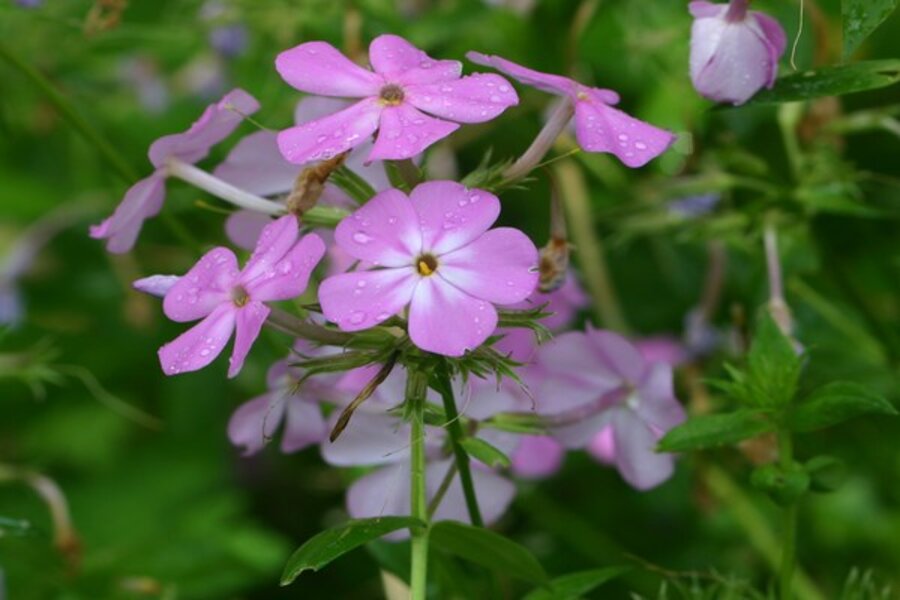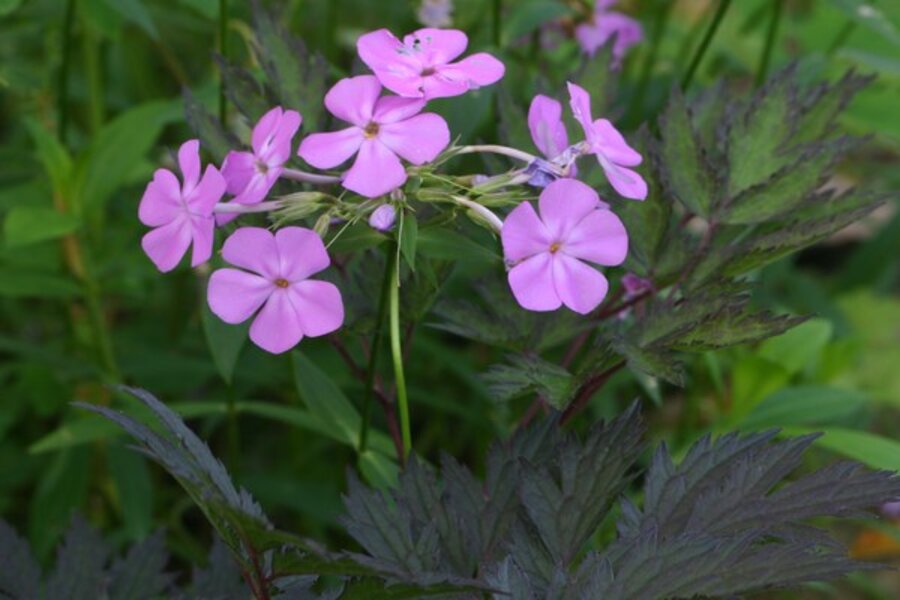Smooth phlox is a charming in-between bloomer
Loading...
Gardeners are probably most familiar with Phlox paniculata, or tall garden phlox, which blooms in summer. If you are a woodland or shade gardener, then perhaps the creeping woodland phlox (P. stolonifera), or wild blue wood phlox (P. divaricata) is most familiar.
While tall garden phlox generally wants sun and blooms in summer, the two woodland species bloom in spring and want an edge-of-the-woods location.
Mr. In-Between
There is a lapse in bloom times between the early woodland phlox and the summer phlox. Fortunately for gardeners, that niche is filled with the smooth phlox (P. glaberrima). I call this species Mr. In-Between for its continual bloom during May and into June here in Southern Indiana. It's native to many East Coast and Midwestern states.
While the smooth phlox is satisfying in the species, my favorite is a cultivar named Morris Berd.
Its individual flowers are quite large compared to the species. Each flower is a rosy-pink with a eye of white swirl, and petals are of heavy substance. The relatively large blooms are carried in clusters well above the foliage. Flowers are fragrant and attractive to hummingbirds and butterflies as well as gardeners. Leaves are long and narrow, clean green, providing a nice background for the blooms.
Morris Berd reaches only a foot or so in height and has a spread of couple of feet. While vigorous in growth, the rhizomatous habit is clump forming, and the plant is well-behaved. It is not demanding about soil -- it handles a wide range from moist to dry -- and does well from shade to full sun. Mine is in open shade.
It's easily grown, very tolerant of less-than-ideal conditions, and hardy from Zones 3 to 8. Throw in resistance to deer browsing, and what more could a gardener ask of a perennial?
In my garden
Along a path located on the west side of my garden where plants will get a touch of setting sun, I have a drift of smooth phlox that ends in dark-leaved bugbane (Actaea) among limestone rocks lining the path. [See third photo above; click on the arrow at the right base of the first and second photos to see the third one.]
On the opposite side, there is a second small drift at the base of a tree. Thus far my favorite companion is Campanula (bellflower). [See second photo above.] The blue blooms of the Campanula provide a punch to the phlox's pink, enhancing the overall experience for those who choose to walk that path over another.
-----
Gene Bush, a nationally known garden writer, photographer, lecturer, and nursery owner, gardens on a shaded hillside in southern Indiana. His website is www.munchkinnursery.com. He also writes the Garden Clippin's Newsletter. To read more by Gene here at Diggin' It, click here.









